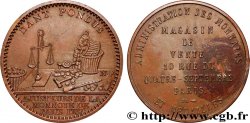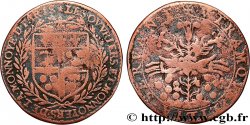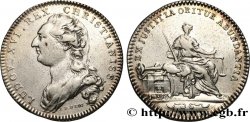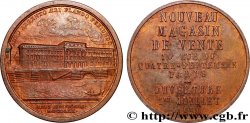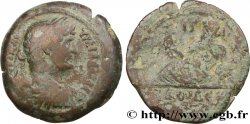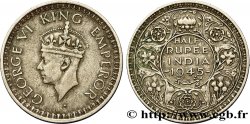E-auction 91-47127 - fjt_304210 - MONNAIE DE PARIS COMMISSION MONÉTAIRE n.d.
Sie müssen angeschlossen sein und von cgb.fr genehmigt werden, um in einer E-Auktion teilzunehmen.Melden Sie sich an, um zu wetten..Die Kontobestätigungen sind innerhalb von 48 Stunden nach Ihrer Anmeldung gemacht.Warten Sie nicht bis die letzten zwei Tage vor dem Abschluss eines Verkaufs, um Ihre Registrierung abzuschließen. Klickend "BIETEN" verpflichten Sie sich vertraglich, diesen Artikel zu kaufen und Sie nehmen ohne Reserve die allgemeinen Verkaufsbedingungen für den e-auctions zu cgb.fr an.
Der Verkauf wird an der Zeit auf der Übersichtsseite angezeigt geschlossen werden. Angebote, die nach der Schließung Zeit empfangen sind, werden nicht gültig.
Bitte beachten Sie, dass die Fristen für die Einreichung Ihres Angebots auf unsere Server können variieren und es kann zur Ablehnung Ihres Angebots entstehen, wenn es in den letzten Sekunden des Verkaufs gesendet wird. Die Angebote sollen mit ganzer Zahl ausgeführt sein, Sie können Kommas oder des Punktes in Ihrem Angebot nicht erfassen. Bei Fragen klicken Sie hier, um einen Blick auf die FAQ E-Auktionen.
KEINE ANSCHAFFUNGSKOSTEN FÜR DIE KÄUFER.
KEINE ANSCHAFFUNGSKOSTEN FÜR DIE KÄUFER.
| Schätzung : | 75 € |
| Preis : | 120 € |
| Höchstgebot : | 201 € |
| Verkaufsende : | 12 Januar 2015 19:06:00 |
| Bieter : | 5 Bieter |
Type : COMMISSION MONÉTAIRE
Datum: n.d.
Metall : Zinn
Durchmesser : 33,50 mm
Stempelstellung : 12 h.
Rand lisse
Seltenheitsgrad : R3
Vorderseite
Titulatur der Vorderseite ET LEGE ET PONDERE ; À L'EXERGUE : LOI DU 31 JUILLET 1879.
Beschreibung Vorderseite Balancier monétaire. Auprès de la base, une corbeille remplie de monnaies.
Übersetzung der Vorderseite Et par la Loi et par le poids.
Rückseite
Titulatur der Rückseite COMMISSION DE CONTROLE - CIRCULATION MONETAIRE DANS LE CERCLE EXTÉRIEUR.
Kommentare
C’est bien entendu le jeton classique de la Monnaie de Paris avec le balancier monétaire qui a servi pour fabriquer ce jeton mais pour le revers il faut noter la disposition en cercle avec le titre générique à l’extérieur et les informations spécifiques à l’intérieur. C’est une disposition qui permet à partir d’un seul coin de frapper plusieurs variétés de jetons en changeant le centre et cela nous fait penser que ce jeton aura servi de jeton d’identification pour les membres de la commission et donc que chacun est unique.
On peut comprendre que la Monnaie ait mis les petits coins dans les grands pour les membres de la Commission chargée de contrôler son efficacité.
Nous connaissons un jeton où le centre du revers est rempli, voir fjt_272621 et notre jeton est la seule épreuve que nous connaissions .
It is of course the classic token of the Monnaie de Paris with the monetary balance that was used to make this token but for the reverse it is necessary to note the circular arrangement with the generic title on the outside and the specific information on the inside. It is an arrangement that allows from a single die to strike several varieties of tokens by changing the center and this makes us think that this token will have served as an identification token for the members of the commission and therefore that each one is unique. We can understand that the Mint put the small coins in the large ones for the members of the Commission responsible for controlling its effectiveness. We know of a token where the center of the reverse is filled, see fjt_272621 and our token is the only proof that we know of
On peut comprendre que la Monnaie ait mis les petits coins dans les grands pour les membres de la Commission chargée de contrôler son efficacité.
Nous connaissons un jeton où le centre du revers est rempli, voir fjt_272621 et notre jeton est la seule épreuve que nous connaissions .
It is of course the classic token of the Monnaie de Paris with the monetary balance that was used to make this token but for the reverse it is necessary to note the circular arrangement with the generic title on the outside and the specific information on the inside. It is an arrangement that allows from a single die to strike several varieties of tokens by changing the center and this makes us think that this token will have served as an identification token for the members of the commission and therefore that each one is unique. We can understand that the Mint put the small coins in the large ones for the members of the Commission responsible for controlling its effectiveness. We know of a token where the center of the reverse is filled, see fjt_272621 and our token is the only proof that we know of








 Berichten über einen Fehler
Berichten über einen Fehler Die Seite drucken
Die Seite drucken Teilen meiner Auswahl
Teilen meiner Auswahl Stellen Sie eine Frage
Stellen Sie eine Frage Einlieferung/Verkauf
Einlieferung/Verkauf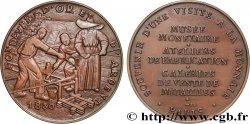
 Details
Details